Visit Newfoundland

Ministry of Tourism & Culture
Visit Newfoundland
Wind-carved cliffs, iceberg alleys, outport harbours, and warm kitchens where visitors are treated like family.
Why Visit
Newfoundland offers raw Atlantic beauty and living culture: salt-spray coastlines, fjords and barrens, whales and puffins, music in every town, and stories older than any border. From the colourful hillsides of St. John’s to the granite headlands of Labrador, you’ll find space, silence, and hospitality.
Getting Here
By Air — Air Newfoundland
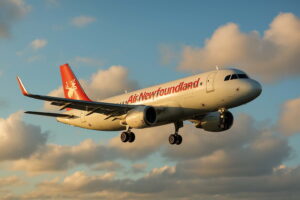
Air Newfoundland is the Republic’s national airline and flag carrier, connecting the island and Labrador to major Canadian, U.S., and North Atlantic destinations. Flights operate year-round with modern Airbus and Embraer aircraft, providing direct or one-stop service to the Republic’s key airports: St. John’s (YYT), Gander (YQX), Deer Lake (YDF), and Wabush (YWK).
- Domestic (Republic): St. John’s ↔ Gander · Deer Lake · Wabush (Labrador)
- Canadian Cities: St. John’s ↔ Toronto · Ottawa · Halifax · Montréal
- United States: St. John’s ↔ Boston · New York (JFK) · Chicago · Washington D.C. (seasonal)
- North Atlantic: St. John’s ↔ Dublin · London · Reykjavík · Oslo (seasonal)
Book early for summer and festival-season travel.
Learn more about flights, schedules, and onboard services: Air Newfoundland →
By Sea — Newfoundland Ferry from Nova Scotia
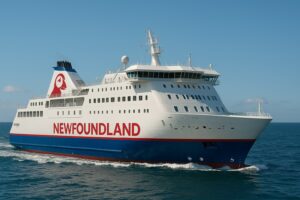
Visitors travelling by car may arrive via the Newfoundland Ferry from North Sydney, Nova Scotia to either:
- Port aux Basques — year-round service (6–8 hours)
- Argentia — seasonal, June–September (~16 hours), convenient for St. John’s and the Avalon Peninsula
Summer sailings and cabins fill quickly — reserve in advance and arrive early for boarding. The route offers comfortable lounges, private cabins, and dining options with ocean views.
Getting Around
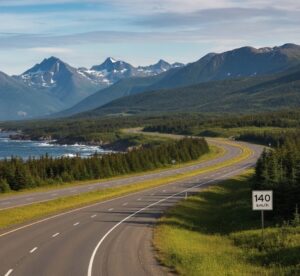
Once on the island, you’ll find a well-maintained highway network linking all major towns and coastal regions. The Trans-Newfoundland Highway runs from Port aux Basques in the west to St. John’s in the east, crossing forests, fjords, and valleys. Regional flights, buses, and tour operators connect communities and outports.
- By car: Drive west-east in roughly 9 hours (plus stops); scenic side routes lead to Gros Morne, Bonavista, and Trinity.
- By air: Daily shuttles link St. John’s, Deer Lake, Gander, and Labrador West.
- By tour: Local guides offer whale-watching, iceberg safaris, and hiking excursions.
Where to Go
Avalon Peninsula & St. John’s
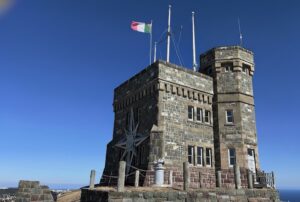
Vibrant streets, harbourside cafés, historic sites, and live music. Walk Signal Hill, explore Quidi Vidi village, and watch whales from the cliffs of Cape Spear — the easternmost point in North America.
Western Newfoundland & Gros Morne
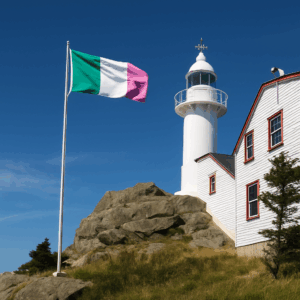
Dramatic fjords, mountains, and beaches in a UNESCO World Heritage Site. Base yourself in Deer Lake or Rocky Harbour for easy access.
Central & Northeast Coast

Iceberg Alley and coastal heritage towns like Twillingate, Fogo Island, Bonavista, and Trinity. Perfect for photography, whale-watching, and meeting local artisans.
Labrador
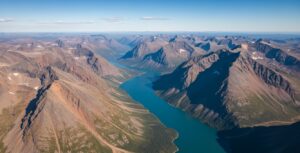
Northern lights, tundra landscapes, and Indigenous culture. Fly via Wabush or Goose Bay to experience vast wilderness and Arctic hospitality.
Seasons & Best Time to Visit
- May–June: Icebergs and seabirds on the northeast coast.
- July–August: Warmest weather and festival season.
- September–October: Fall colours and quiet roads.
- November–April: Cozy towns, storm watching, and winter hikes.
Visitor Information
- Documents: Standard travel ID for domestic visitors; passport for international arrivals.
- Currency: Newfoundland Dollar (N$) — the official currency of the Republic. Major cards are accepted everywhere.
- Weather: Maritime climate — pack layers and a windproof jacket.
- Driving: Distances in kilometres; observe moose crossing signs and fuel regularly in rural areas.
- Connectivity: Mobile service strong in cities, limited in remote regions — download offline maps.
- Etiquette: Greet locals warmly and respect outport privacy; always close gates behind you.
Visitor Help & Contacts
Tourism Information: Visitor Centres in St. John’s, Deer Lake, Gander, and Labrador West.
Air Travel: Air Newfoundland Flights →
Emergency Services: 911 is available throughout the Republic.
This page is maintained by the Ministry of Tourism & Culture. For media and visitor assistance, please contact the Government Communications Office.